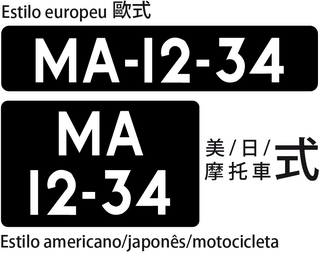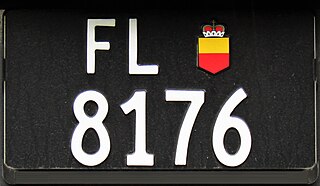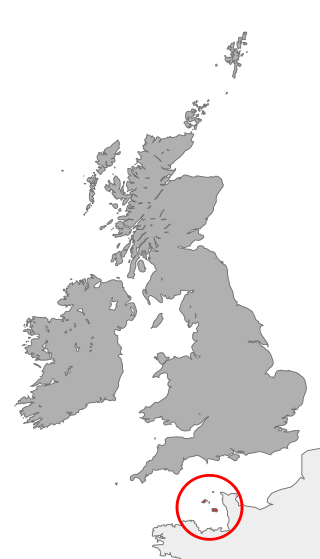
A vehicle registration plate, also known as a number plate or license plate or licence plate, is a metal or plastic plate attached to a motor vehicle or trailer for official identification purposes. All countries require registration plates for road vehicles such as cars, trucks, and motorcycles. Whether they are required for other vehicles, such as bicycles, boats, or tractors, may vary by jurisdiction. The registration identifier is a numeric or alphanumeric ID that uniquely identifies the vehicle or vehicle owner within the issuing region's vehicle register. In some countries, the identifier is unique within the entire country, while in others it is unique within a state or province. Whether the identifier is associated with a vehicle or a person also varies by issuing agency. There are also electronic license plates.

Number plates in Belgium are driver specific, meaning that they are transferred to a new vehicle from the owner's previous one.
The Italian vehicle registration plates are the compulsory alphanumeric plates used to display the registration mark of motor vehicles registered in Italy. They have existed in the country since 1897.
Austrian car number plates are mandatory vehicle registration plates displaying the registration mark of motor vehicles in Austria. They are used to verify street legality, proof of a valid liability insurance and to identify and recognise the vehicle.

Vehicle registration plates in Hong Kong are managed by the Transport Department of Hong Kong. The physical number plates are not provided by the government but are made to order by garages. The vehicle registration system in Hong Kong is independent from that of Mainland China and Macau. Hong Kong's official UN road code is HK, as of June 2024.

In the United States, vehicle registration plates, known as license plates, are issued by a department of motor vehicles, an agency of the state or territorial government, or in the case of the District of Columbia, the district government. Some Native American tribes also issue plates. The U.S. federal government issues plates only for its own vehicle fleet and for vehicles owned by foreign diplomats. Until the 1980s, diplomatic plates were issued by the state in which the consulate or embassy was located.

A vehicle registration plate, also known as a number plate, license plate or licence plate, is a metal or plastic plate or plates attached to a motor vehicle or trailer for official identification purposes. The registration identifier is a numeric or alphanumeric code that uniquely identifies the vehicle within the issuing authority's database. In Europe most countries have adopted a format for registration plates that satisfies the requirements in the Vienna Convention on Road Traffic, which states that cross-border vehicles must display a distinguishing code for the country of registration on the rear of the vehicle. This sign may be an oval sticker placed separately from the registration plate, or may be incorporated into the plate. When the distinguishing sign is incorporated into the registration plate, it must also appear on the front plate of the vehicle, and may be supplemented with the flag or emblem of the national state, or the emblem of the regional economic integration organisation to which the country belongs. An example of such format is the common EU format, with the EU flag above the country code issued in EU member states.
Vehicle registration plates in Singapore are administered by the Land Transport Authority. All vehicles in Singapore are required to display front and back plates bearing its registration number. Purchasers of vehicles have the option to bid for a vehicle registration number or get a vehicle registration number automatically assigned. Vehicle registration numbers can be retained on new or old vehicles owned by the same person, with a validity of 1 year or with extensions of 6 months thereafter. Vehicle owners are also able to replace and bid for a new registration number for existing vehicles.

Vehicle registration plates are mandatory number plates used to display the registration mark of a vehicle registered in France. They have existed in the country since 1901. It is compulsory for most motor vehicles used on public roads to display them.

Thailand's vehicle registration plates are issued by the Department of Land Transport (DLT) of the Ministry of Transport. They must be displayed on all motorized road vehicles, as required by the Motor Vehicle Act, B.E. 2522 and the Land Transport Act, B.E. 2522. The plates vary in design, colors and dimensions according to the type of vehicle, but usually display a registration number and the vehicle's province of registration. Specifications are given in Ministry of Transport regulations. Current style started in 1975 for most vehicle types, but with small changes in 1997, and 1997 for motorcycles.

In Macau, vehicle registration marks have been issued by the Transport Bureau since 2008. The bureau does not provide the registration plates themselves; these are made by garages and vehicle accessory shops at the owners' request.
Vehicle registration plates of Estonia are divided into 18 categories, the most common of these (A1) is composed of three numbers and three letters. Most registration plate types have black letters on a white background, and the plates are the same size and length as other European plates. Previously the first of the three letters indicated the region of Estonia in which the car was registered; however, as of 2013, this is no longer the case. The third digit from the numbers indicated states when the car is due an inspection. It can be inspected up to 2 months after that digit. The registration plates are printed on an aluminium sheet with minimum thickness of 1 mm and must fulfil the requirements of ISO 7591:1982. All plates are issued with the blue European Union identification label, except types A9 and B2.

Vehicle registration plates of the Principality of Liechtenstein are composed of the letters FL, followed by the small version of the coat of arms of Liechtenstein and up to five digits. The letters FL stand for Fürstentum Liechtenstein. Standard license plates show white characters on a black background, using the same type of font as Swiss license plates.
The vehicle registration plates of Cyprus are composed of three letters and three digits. A simple incremental numbering system is used; numbers run from 001 to 999 per letter sequence (alphabetic), so that, for example, the plate to be issued after MAA 999 would be MAB 001. However, registrants may be allowed to choose a number from available numbers in the extant letter sequence.

Vehicle registration plates are displayed on all motorised road vehicles in Brunei, as required by law. The issue of registration plates is regulated and administered by the Brunei Land Transport Department. All vehicles must also display two of the same registration plates numbers of the same colours at the front and rear of the vehicles. All vehicle registration plates in Brunei, other than those issued to royalty, diplomats and taxis, have white characters on a black background, regardless of the vehicle type.
An Israeli vehicle registration plate, or an Israeli license plate, is a vehicle registration plate, a metal or plastic plate or plates attached to a motor vehicle or trailer, used in Israel for official identification purposes.
Vehicle registration plates are the alphanumeric plates used to display the registration mark of a vehicle, and have existed in the United Kingdom since 1904. It is compulsory for motor vehicles used on public roads to display vehicle registration plates, with the exception of vehicles of the reigning monarch used on official business.
Vehicle registration plates were used in the Soviet Union for registrations of automobiles, motorcycles, heavy machinery, special-use vehicles as well as construction equipment, military vehicles and trailers. Every vehicle registration plate contains a unique registration mark embossed on a metal plate or a plate made of other materials. All vehicles were required to display the plates on the front side and backside, with the exception of trailers and motorcycles, which were only required to display one on the backside.
Vehicle registration plates, commonly known as number plates, are the mandatory alphanumeric or numeric plates used to display the registration mark of a vehicle.

Vehicle registration plates, commonly referred to as number plates, are the mandatory numeric or alphanumeric plates used to display the registration mark of a vehicle. The Crown dependency of Guernsey is outside the United Kingdom and the European Union, and its islands have registration marks that are different from those used in the UK. The international vehicle registration code for Guernsey is GBG.













